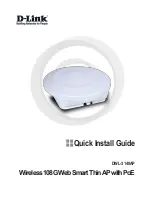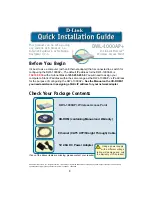
28
Correcting Performance Issues
AirScout identifies multiple performance limitations related to signal quality, congestion
and interference, providing an opportunity to correct these issues.
Signal Quality
Radio dead zones and weak zones are displayed on the signal strength heat map. Dead
zones occur when a Wi-Fi enabled device is outside the radio range of the master or CPE.
Weak zones occur when signal strength is low or the signal-to-noise ratio is low.
1. Optimizing the CPE location can, under the right conditions, minimize dead and weak
zones.
2. Adding a second access point near the dead or weak zone is often an effective method
for eliminating dead or weak zones.
3. Adding a repeater between the working zone and the dead or weak zone is often an
effective method for eliminating dead or weak zones, but a repeater operating on the
same channel increases congestion, reducing maximum throughput.
Congestion
Congestion, defined by 802.11 as visible network traffic, is displayed on the client
room performance metrics menu. AirScout measures congestion due to other networks
operating on the same channel competing for radio resources.
1. Selecting the correct 2.4 GHz and 5 GHz CPE channel is the most effective solution for
minimizing congestion.
2. Select a 2.4 GHz and 5 GHz CPE channel that is not in use by any other network. It is
necessary to have complete AP visibility at every location within the premises where
network resources are used.
3. If all channels are in use, select the channel with the minimal number of clients or
lowest bandwidth utilization.
4. If all channels are heavily loaded, there may be no channel choice that can satisfy the
customer’s quality of experience expectations.
Interference
Interference is caused by devices emitting in the 2.4 GHz and 5 GHz 802.11 radio
spectrum and is a common problem. This includes 802.11 compliant devices on adjacent
channels, 802.11 compliant devices that are not cooperative, microwave ovens, cordless
phones, Bluetooth devices, wireless video cameras, wireless game controllers, Zigbee
devices, WiMAX, fluorescent lights, and more. Identifying possible common sources of
interference and eliminating them from the premises if possible is the best method of
minimizing interference.
1. Selecting the correct 2.4 GHz and 5 GHz CPE channel is an effective solution for
minimizing interference from other 802.11 compliant devices.
2. Select a 2.4 GHz and 5 GHz CPE channel with the minimal number of adjacent
channels.











































